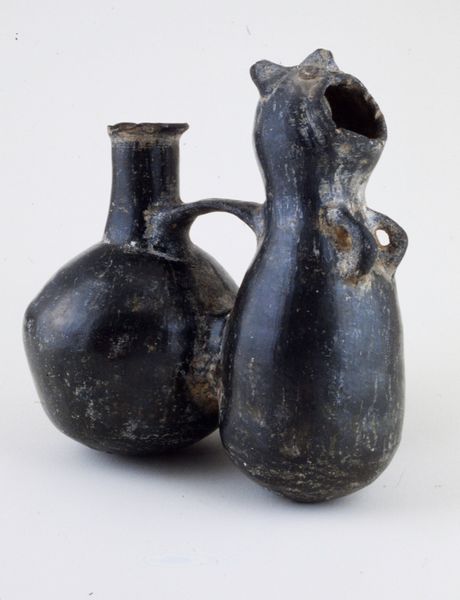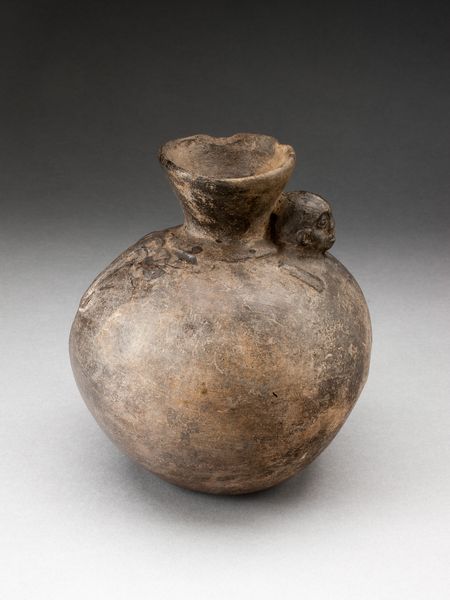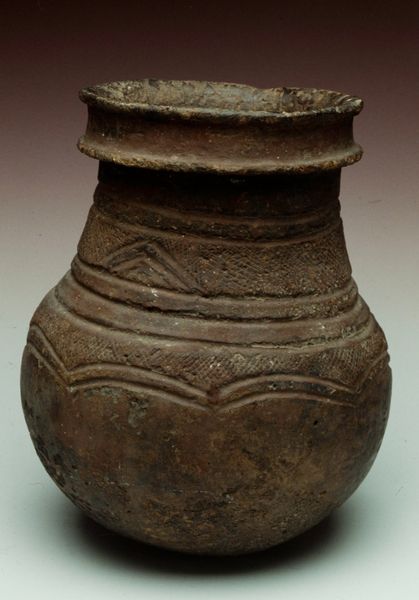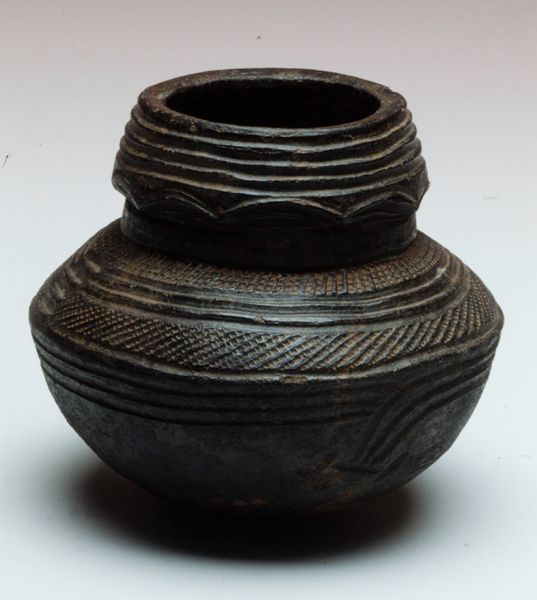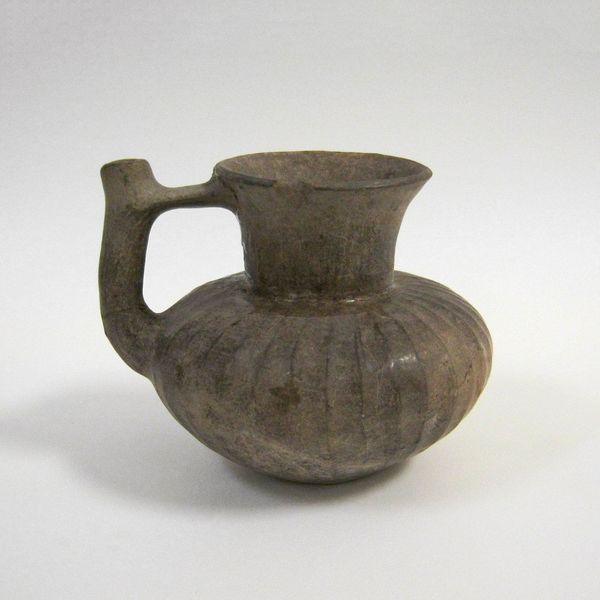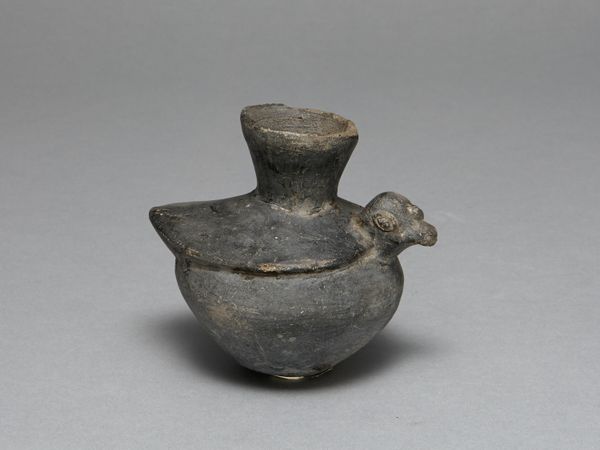
ceramic, sculpture
#
ceramic
#
vase
#
form
#
geometric
#
sculpture
#
decorative-art
Dimensions: 5 3/4 x 11 1/4 x 4 3/4 in. (14.6 x 28.58 x 12.07 cm)
Copyright: Public Domain
Curator: Here we have a Yombe ceramic piece, entitled “Vase,” dating to around the 20th century. It’s a sculpture of sorts, showcasing decorative-art elements and currently held here at the Minneapolis Institute of Art. What strikes you first about this piece? Editor: There's an undeniable primal feeling. It's not pristine, but carries marks, literally, of the earth, fire, and human hands. And those connected bulbous shapes -- do you think that has symbolic weight related to life and duality? Curator: It certainly begs consideration. Given its possible function, the two forms could imply complementarity or reciprocity. Thinking about symbolic weight, it could also recall connected histories, suggesting kinship networks or collaborative acts, reflecting the social structure of Yombe culture. Editor: Do we know what was stored inside of a vessel with such a distinct construction? It is a powerful material declaration. A reminder that form and content aren't distinct categories but bleed into each other shaping meaning and experience. Curator: It’s difficult to say with certainty what this vessel might have held, though vessels like this were often used to store and preserve valued liquids. It may have been ceremonial waters, a rare or precious oil or, indeed, some type of funerary preservative. This vessel form also appears to function in dispersing fragrance. The geometric carvings near the rounded surface may hold significance in disclosing its specific meaning. It is an important tool in material record-keeping. Editor: When I think about liquids potentially stored, and with such solemn consideration to function as a ritualistic object...It seems loaded with the implications of tradition and belonging, the weight of communal history resting within it. Its imperfections don’t diminish it; rather, they underline a very human investment in the natural world as sustenance. Curator: Absolutely. The rough textures, subtle curves, the dual bulbous shapes linked but individual, these all remind us that symbols reside not just in overt representation but in the subtleties of craft and materiality. Editor: So this vase challenges us, then, to view the world around us—and the art within it—as interconnected, imbued with the echoes of our past, and forever molded by the present moment. Curator: Indeed, perhaps one could consider how it all comes full circle...the "form" reminding us of continuity, adaptation and ingenuity, reflecting an intertwined connection with life, death, and the community it once served.
Comments
No comments
Be the first to comment and join the conversation on the ultimate creative platform.


